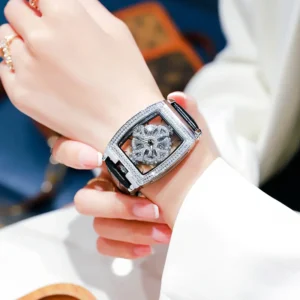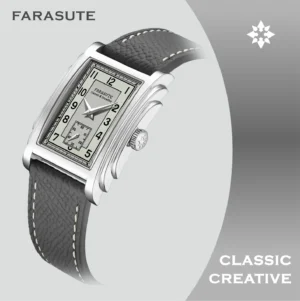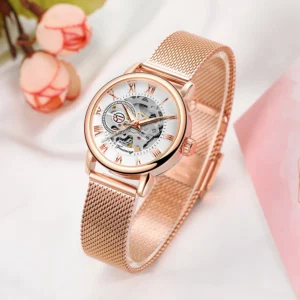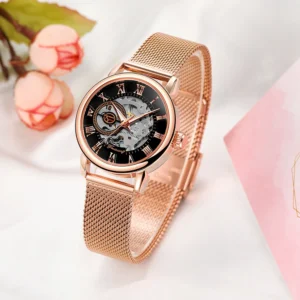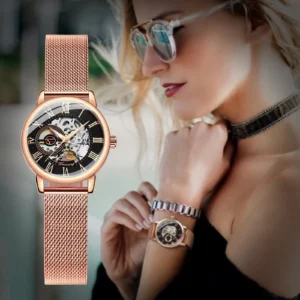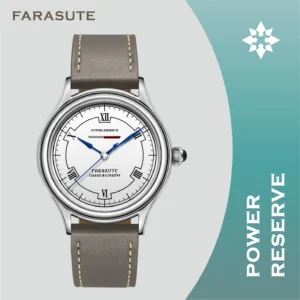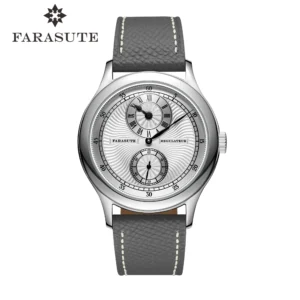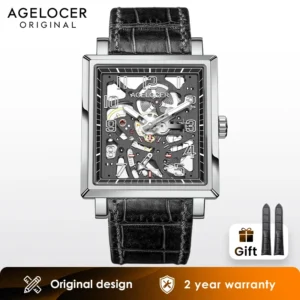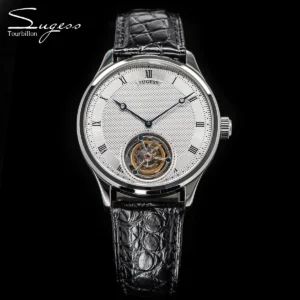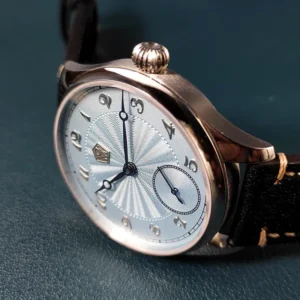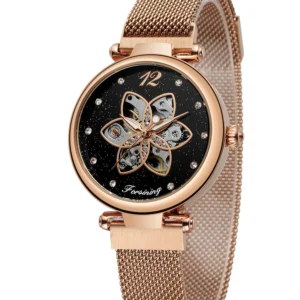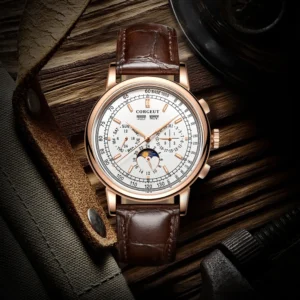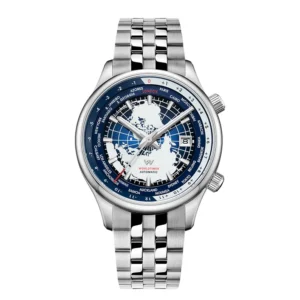Manual Wind Dress Watches
Embrace refined style with our manual wind dress watches. Hand-winding means slimmer, classic designs that elevate your look for any occasion, from formal to everyday.

Showing 1–12 of 17 results
- $104.12 Select options This product has multiple variants. The options may be chosen on the product page
Classic Manual Wind Watches, Manual Wind Dress Watches, Square & Rectangular Automatic Watches
$884.95 Select options This product has multiple variants. The options may be chosen on the product pageAutomatic Skeleton Watches, Manual Wind Dress Watches, Mechanical Skeleton Watches
$80.72 Select options This product has multiple variants. The options may be chosen on the product pageManual Wind Dress Watches, Mechanical Skeleton Watches
$126.44 Select options This product has multiple variants. The options may be chosen on the product pageAutomatic Skeleton Watches, Manual Wind Dress Watches, Mechanical Skeleton Watches
$117.92 Select options This product has multiple variants. The options may be chosen on the product pageClassic Manual Wind Watches, Manual Wind Dress Watches
$1,222.13 Select options This product has multiple variants. The options may be chosen on the product pageClassic Manual Wind Watches, Manual Wind Dress Watches
$761.16 Select options This product has multiple variants. The options may be chosen on the product pageManual Wind Dress Watches, Mechanical Skeleton Watches, Square & Rectangular Automatic Watches
$671.02 Select options This product has multiple variants. The options may be chosen on the product pageAutomatic Skeleton Watches, Classic Manual Wind Watches, Manual Wind Dress Watches, Mechanical Skeleton Watches
$1,944.80 Select options This product has multiple variants. The options may be chosen on the product pageAutomatic Skeleton Watches, Manual Wind Dress Watches, Mechanical Skeleton Watches
Price range: $265.44 through $285.64 Select options This product has multiple variants. The options may be chosen on the product pageClassic Manual Wind Watches, Manual Wind Dress Watches
Price range: $473.93 through $482.32 Select options This product has multiple variants. The options may be chosen on the product pageManual Wind Dress Watches, Mechanical Skeleton Watches
$78.00 Select options This product has multiple variants. The options may be chosen on the product page
Showing 1–12 of 17 results
The Art and Heritage of Manual Wind Dress Watches
What Defines a Manual Wind Dress Watch?
Manual wind dress watches represent the perfect marriage of tradition and elegance in the world of horology. Unlike their automatic counterparts, these timepieces require daily winding by hand, creating a personal ritual that connects the wearer to centuries of watchmaking heritage. This deliberate action of turning the crown each day infuses life into the delicate mechanical heart of the watch, powering its precise movements.
What truly distinguishes a dress watch is its refined aesthetic—typically featuring a slim profile that slides effortlessly beneath a shirt cuff, a clean, uncluttered dial that prioritizes legibility, and an overall elegant design that complements formal attire. The manual winding mechanism perfectly complements these dress watch aesthetics, allowing for thinner case designs that exemplify understated sophistication.
Horological enthusiasts particularly cherish this combination for its purity of engineering and the intimate connection it fosters. Each manual wind watch represents hundreds of hours of meticulous craftsmanship, resulting in a piece that not only tells time but tells a story of precision, patience, and artistry.
The Timeless Appeal of Hand-Wound Elegance
Manual winding represents the original art of watchmaking, dating back to the very first pocket watches. Before the advent of automatic movements, this was the only way to power a mechanical timepiece. This historical significance brings with it a sense of tradition and authenticity that many collectors deeply appreciate.
The daily winding ritual offers more than just functionality—it provides a tactile pleasure and meditative moment in our otherwise automated lives. There’s something profoundly satisfying about the gentle resistance of the crown as you wind the mainspring, knowing that you’re directly transferring energy that will power your timepiece throughout the day.
The inherent advantages of manual wind dress watches include:
- Noticeably thinner cases, allowing for a more elegant profile on the wrist
- Unobstructed views of the movement through exhibition casebacks, without a rotor blocking the intricate mechanisms
- Enhanced appreciation of watchmaking craftsmanship with visible balance wheels and finely finished bridges
- More intimate relationship with your timepiece through the daily winding routine
- Often more affordable than their automatic equivalents due to simpler construction
In today’s world of convenience and automation, the deliberate choice to wear a watch requiring human interaction stands as a thoughtful rejection of constant efficiency in favor of meaningful experience.
Our Curated Collection: Masterpieces of Manual Horology
At Sharp Aspect, our manual wind dress watch collection represents the pinnacle of horological art. Each timepiece is meticulously selected based on its movement quality, finishing standards, and design excellence. We believe these watches should be as beautiful inside as they are outside, which is why we prioritize proper decoration and technical execution in every model we offer.
Our collection spans from ultra-thin masterpieces of minimalism that celebrate restraint to classically proportioned round cases that honor traditional aesthetics. Some feature meticulously executed guilloché dials that catch and play with light, while others showcase the elegant simplicity of perfectly balanced indices and hands. Each represents a different interpretation of horological elegance, united by their hand-wound hearts.
Distinguished Features of Fine Manual Wind Timepieces
The architecture and decoration of a manual wind movement reveal the true soul of watchmaking. The finest examples feature traditional finishing techniques such as Geneva stripes (parallel decorative lines), perlage (circular graining), and anglage (polished beveled edges on components). These details aren’t merely decorative—they represent the watchmaker’s commitment to excellence even in areas rarely seen.
Case proportions play a crucial role in dress watch design, with ideal thicknesses typically ranging from 7-10mm. This slenderness is only possible thanks to the compact nature of manual movements. Materials range from classic stainless steel to precious metals like gold and platinum, each bringing its own character to the wrist.
Dial craftsmanship elevates a good watch to greatness. Look for applied rather than printed indices, which create dimension and catch light dramatically. Traditional techniques like guilloché (intricate geometric engravings) and grand feu enamel (glass powder fused at high temperatures) demonstrate exceptional artisanal skill and provide a depth impossible to achieve with simpler methods.
Sapphire crystals, standard on quality manual wind watches, offer superior scratch resistance while allowing clear views of the dial. Many also feature exhibition casebacks revealing the movement’s beauty—a testament to the watchmaker’s pride in their work and confidence in its execution.
The perfect manual wind dress watch is completed with straps of matching quality. Premium leathers like alligator and calfskin develop beautiful patinas over time, molding to the wearer’s wrist for exceptional comfort while adding a final touch of sophistication.
Style Guide: Finding Your Perfect Manual Wind Dress Watch
Case Diameter and Wrist Proportion
The ideal case diameter depends largely on wrist size. For smaller wrists (under 6.5 inches), consider watches between 34-38mm for balanced proportions. Medium wrists (6.5-7.25 inches) typically accommodate 38-40mm cases beautifully, while larger wrists can confidently wear pieces up to 42mm while maintaining dress watch elegance.
Formal vs. Business Attire Pairings
For black-tie events, the classic choice remains a slim white or silver-dialed watch on a black leather strap. Business settings allow more flexibility—champagne, blue, or even textured dials paired with brown leather create a sophisticated yet approachable aesthetic. The key is simplicity—fewer complications generally translate to greater versatility.
Dial Color Versatility
While white and silver dials represent the most traditional choice, modern interpretations include subtle blues, grays, and even deep greens. These alternatives maintain elegance while expressing individuality. Consider your wardrobe palette when selecting a dial color—navy and gray suits pair beautifully with nearly any dial color, while brown tones create harmony with champagne or cream dials.
The Ritual of Manual Winding: A Connection to Horology
The daily winding of a manual timepiece creates a unique bond between watch and wearer. This small ritual, taking no more than a few moments each morning, creates a mindful pause—a chance to appreciate craftsmanship in an age of disposable technology. Many enthusiasts describe this interaction as meditative, creating awareness of both the passage of time and the remarkable engineering that measures it.
For optimal performance of your manual wind dress watch:
- Wind your watch at approximately the same time each day, ideally in the morning
- Turn the crown slowly and deliberately until you feel resistance (typically 20-30 turns)
- Never force the crown when you feel resistance—this indicates a fully wound mainspring
- Be mindful of the power reserve (typically 40-48 hours) if you choose not to wear your watch daily
This simple practice ensures consistent timekeeping while deepening your appreciation for the mechanical marvel adorning your wrist.
How to Care for Your Manual Wind Timepiece
Consistent winding maintains not only accuracy but also the health of your timepiece. Beyond daily winding, manual watches benefit from regular wear, as the natural oils in the movement are distributed through regular operation. If left unwound for extended periods, these oils can thicken and affect performance.
When not worn, store your manual wind dress watch in a cool, dry place away from direct sunlight. Watch boxes or watch rolls provide ideal protection against dust and environmental factors while preventing potential scratches from contact with other objects.
Service intervals typically range from 3-5 years depending on the manufacturer and movement complexity. This preventative maintenance ensures that your manual wind watch will continue to perform beautifully for generations. During servicing, the movement is disassembled, cleaned, lubricated, and regulated—a process that maintains both accuracy and longevity.
Avoid setting the date (if applicable) between 9 PM and 3 AM when the date mechanism is engaged, as this can damage delicate components. Similarly, always set the time by moving the hands forward rather than backward to prevent unnecessary stress on the movement.
The Enduring Legacy of Manual Wind Craftsmanship
In an era dominated by technology and automation, manual wind dress watches stand as elegant reminders of human ingenuity and craftsmanship. They represent the perfect intersection of art and engineering—functional objects elevated to the level of mechanical poetry through their meticulous execution and thoughtful design.
The continued relevance of these timepieces speaks to something deeper than mere timekeeping. They connect us to horological traditions spanning centuries and remind us that some experiences—like the ritual of winding a fine watch—are worth preserving precisely because they require our participation. For the discerning collector, a manual wind dress watch isn’t simply an accessory but a statement about valuing craftsmanship, tradition, and the subtle beauty of mechanical precision.

